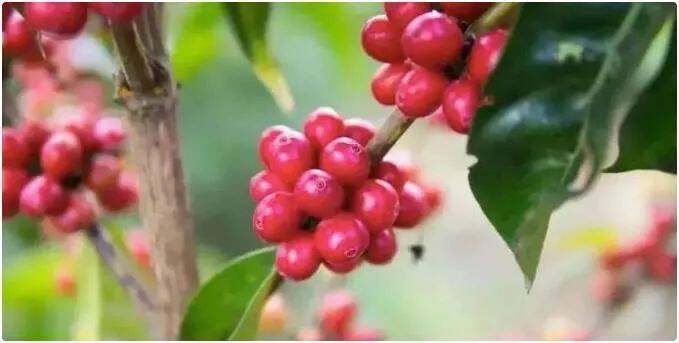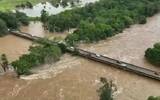Kenya Coffee Development, Coffee producing areas, Coffee grading, introduction of SL28/SL34 Coffee varieties
Kenya is located in eastern Africa and runs across the country by the equator, while the East African Rift Valley runs north and south. It borders Somalia, Tanzania, Ethiopia and South Sudan, and borders the Indian Ocean to the southeast. The coastal areas are plains, and most of the rest are plateaus, with an average elevation of 1500 meters. And there are many volcanoes, the extinct volcano Mount Kenya in the central highlands is as high as 5199 meters above sea level.

Although Kenya is adjacent to Ethiopia, the birthplace of coffee, the coffee industry in Kenya is relatively late. First brought to Kenya by French missionary 0 from the island of Reunion in 1893, it was later planted on a large estate under British colonial rule, and the coffee beans were shipped to London. Coffee sales were relocated to Kenya only after the Coffee Act of 1933 was passed and the Kenya Coffee Commission was established. The auction system was established in 1934 and is still in use today. In 1935, the government drew up a draft grading system for coffee quality. In the 1950s, the government passed a farm bill called Swynnerton Plan, which made farmers own farmland, be self-sufficient and increase their income.
Therefore, Kenya will use the same grading system for both self-elimination and external sale, which takes the size and quality of coffee beans as indicators and has clear rules on the size of coffee beans. Divided into AA+, AA, AB, PB, C, E, TT, T. The common grades on the market are AA, AB and PB.
There are many coffee producing areas in Kenya, such as Bangma Bungoma, Embu Embu, Kiambu Kiambu, Kirinyaga Kirinyaga, Kisi Kisii, Machakos Machakos, Meru Menu, Elgonne Mt.Elgon, Mulanga Murang'a, Nakuru Nakuru, Neri Nyeri, Sika Thika, Tita Vita Taita Taveta, Transz-Enzoya Trans-Nzoia. There are 14 producing areas, of which Minli, Kilinia, Mulanga, Kiribu and Sika are the most famous.

The most important and unique coffee variety in Kenya is SL28/SL34. SL28/SL34 was first selected in the 1930s, mainly in Kenya and Africa, and later spread to Latin America. This variety is suitable for middle and high altitude areas and has good drought resistance, but it is easily affected by coffee disease. Between 1935 and 1939, Scott Laboratories selected 42 coffee trees from different sources and prefixed SL to study the yield, quality, drought and disease resistance of these 42 coffee trees. SL28 was selected from a single tree named Tanganyika drought resistance population in 1935. Genetic tests showed that SL28 was related to the bourbon gene. SL34 was selected from a tree at Loresho Manor in Cabette, Kenya, and genetic tests showed that SL34 was linked to the iron pickup gene.
The Scott Lab was established in Kenya by the British colonial government in 1992 and is responsible for agricultural research conducted by the Ministry of Agriculture and technology and training provided by Kenyan farmers. But the restriction has become the Kenya National Agricultural Laboratory (NARL). At present, SL28 trees are grown in many parts of Kenya, which have a history of 60-80 years, but are still productive.
Among them, Qianjie Coffee has coffee beans from Asali Asalia AA TOP from Sika. The variety of this coffee bean is SL28, which is treated with Kenyan exquisite 72-hour washing (K72). Use 15g coffee beans, the ratio of powder to water at 1:15 and the water temperature of about 92 degrees to cook by hand. After cooking, the palate will have the flavor of virgin fruit and black plum, with bright acidity and clean taste, with sweet yellow sugar and green tea in the finish.
Important Notice :
前街咖啡 FrontStreet Coffee has moved to new addredd:
FrontStreet Coffee Address: 315,Donghua East Road,GuangZhou
Tel:020 38364473
- Prev

Can I use warm milk to extract coffee? How can cream coffee be made to taste better?
Not long ago, Qianjie demonstrated to everyone that soaking coffee powder in warm water could make a sweet cold extract more efficiently. Suddenly, he thought of the pot of "milk extract". In theory, since warm water can come in handy, warm milk should also be able to be extracted. Curiosity is coming, but it can't be blocked.
- Next

Affected by the weather, Ethiopian coffee production will be reduced by more than 10%, and the price will remain high.
Recently, the United States Department of Agriculture (USDA) said that due to the impact of El Ni ñ o, the African region suffered from dry weather, some crops, coffee and other production will be reduced. At the end of 2022 / 23, Ethiopian coffee production is expected to total 7.3 million bags (60 kg each), lower than the previous forecast.
Related
- What is the standard process for the purpose of coffee cup testing? What is the difference between hand-brewed coffee and cup testing?
- How to use hand-brewed coffee paragon small golden balls? How does cold coffee lock in the aroma of coffee?
- Is American coffee black? What is the difference between American coffee and drip coffee?
- Unexpected! Well-known tea beverage brand Lele Tea will withdraw from the Zhengzhou market!
- Starbucks enters the fashion and beauty industry?! Netizen: Give me an ice American eye cream
- Why can American refills for free? The difference between Americano and American drip pot coffee
- Being chased out of the rain in front of Starbucks?! Store: Sheltering from rain under umbrellas poses a safety hazard
- The white moonlight has changed?! Lucky launches "Big Winter Pear American"
- Hand-brewed coffee three-stage method, high-sweet and universal brewing method to share! What does the high sweet water level of hand-brewed coffee mean?
- What is the difference between raw, refined and full espresso coffee? How to extract espresso and taste good?

